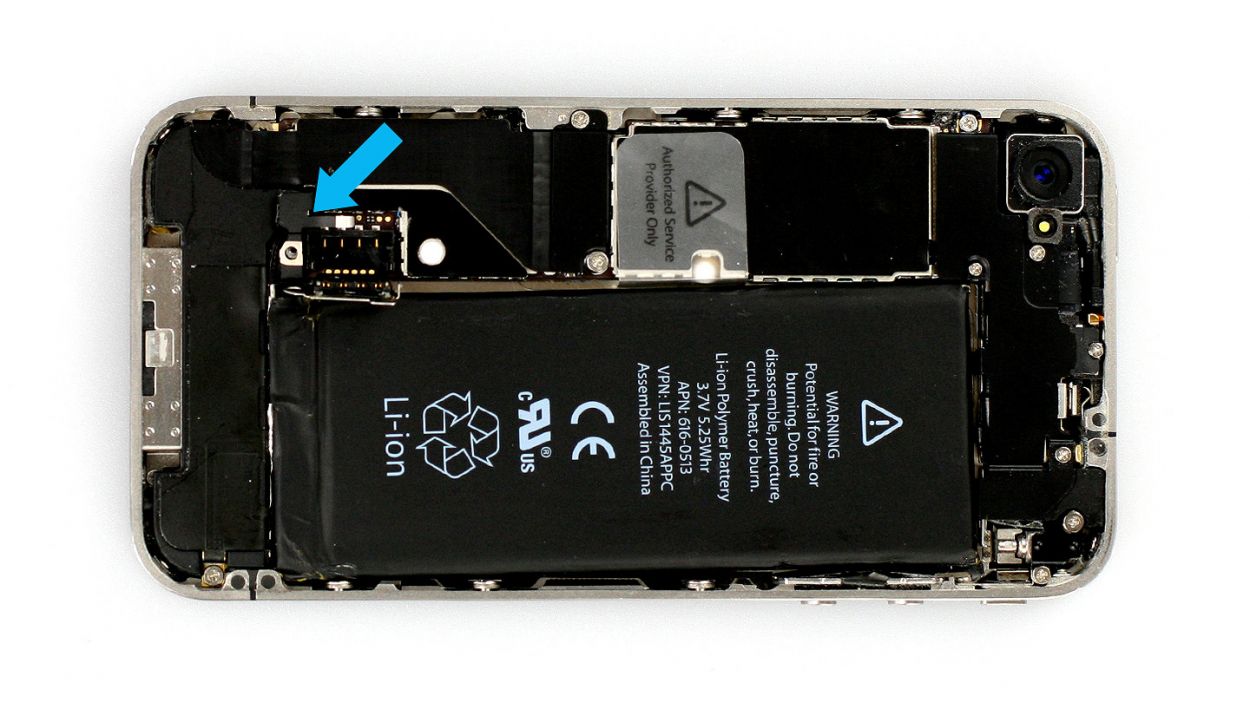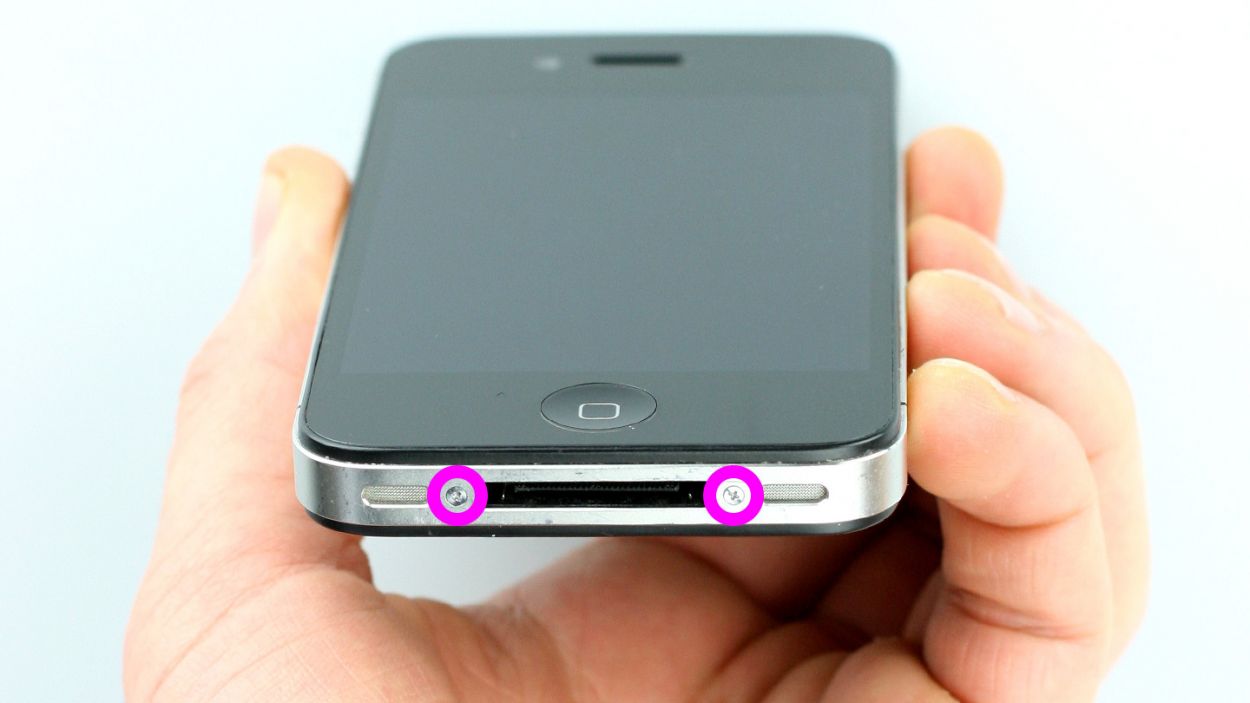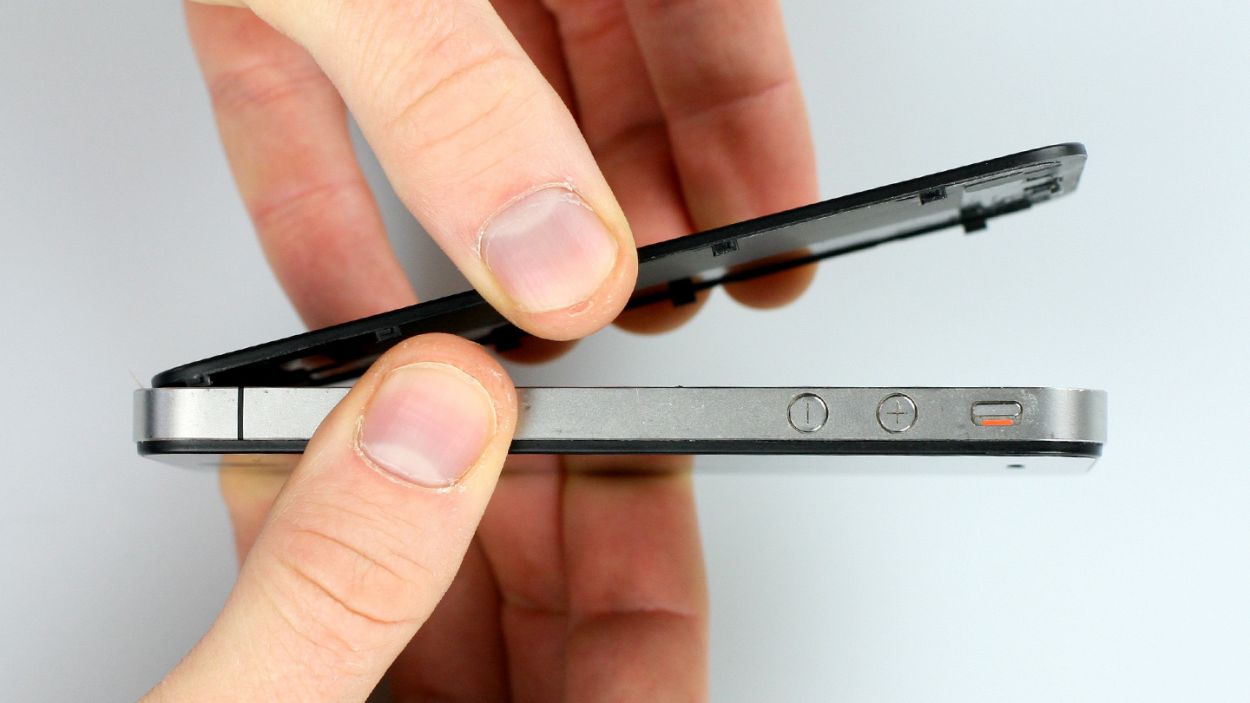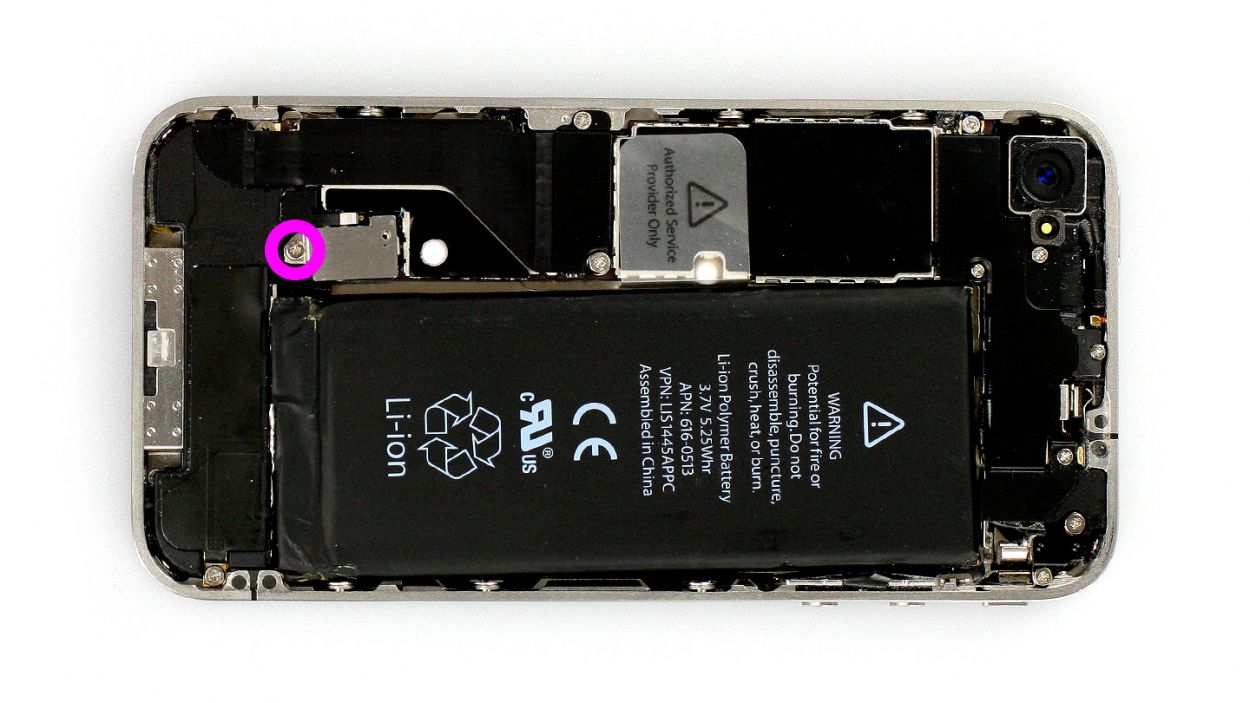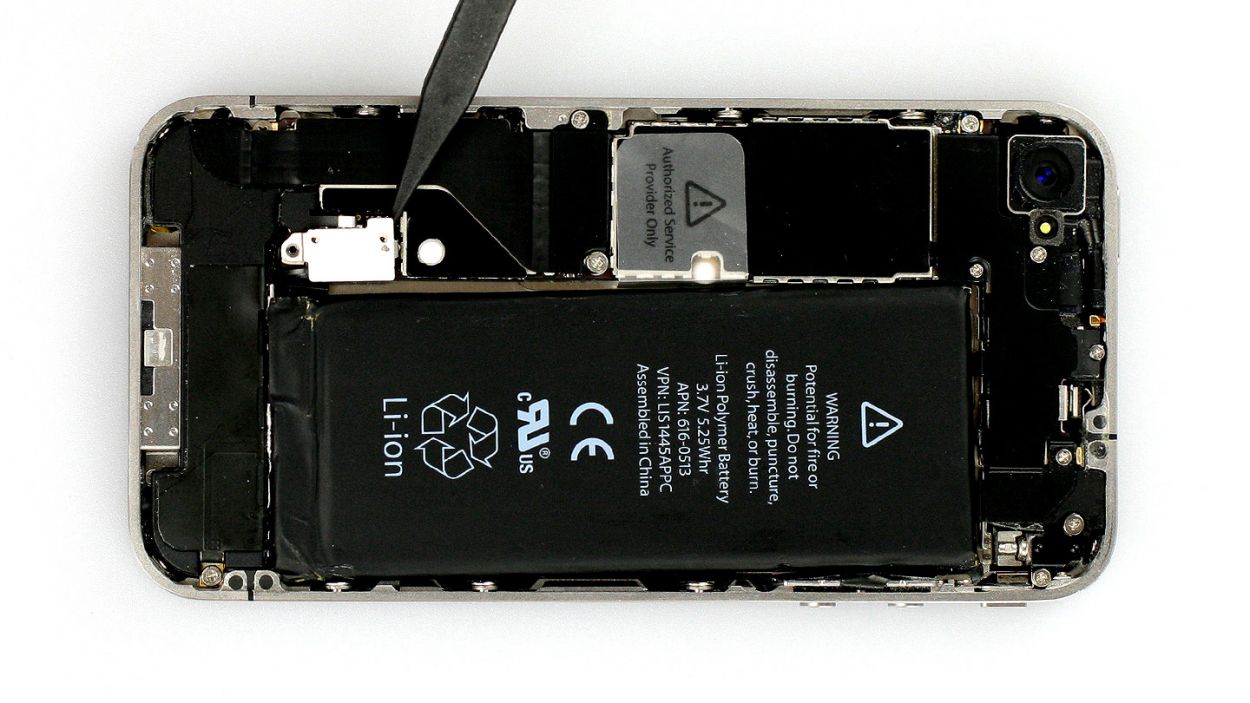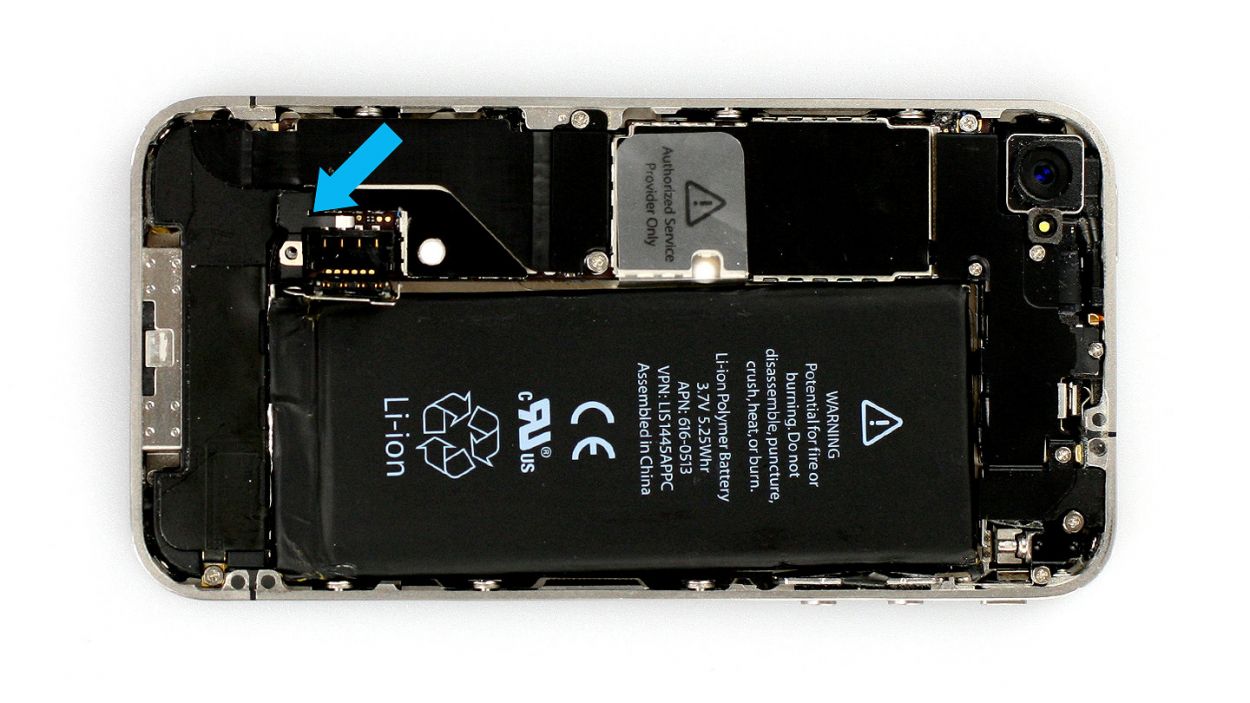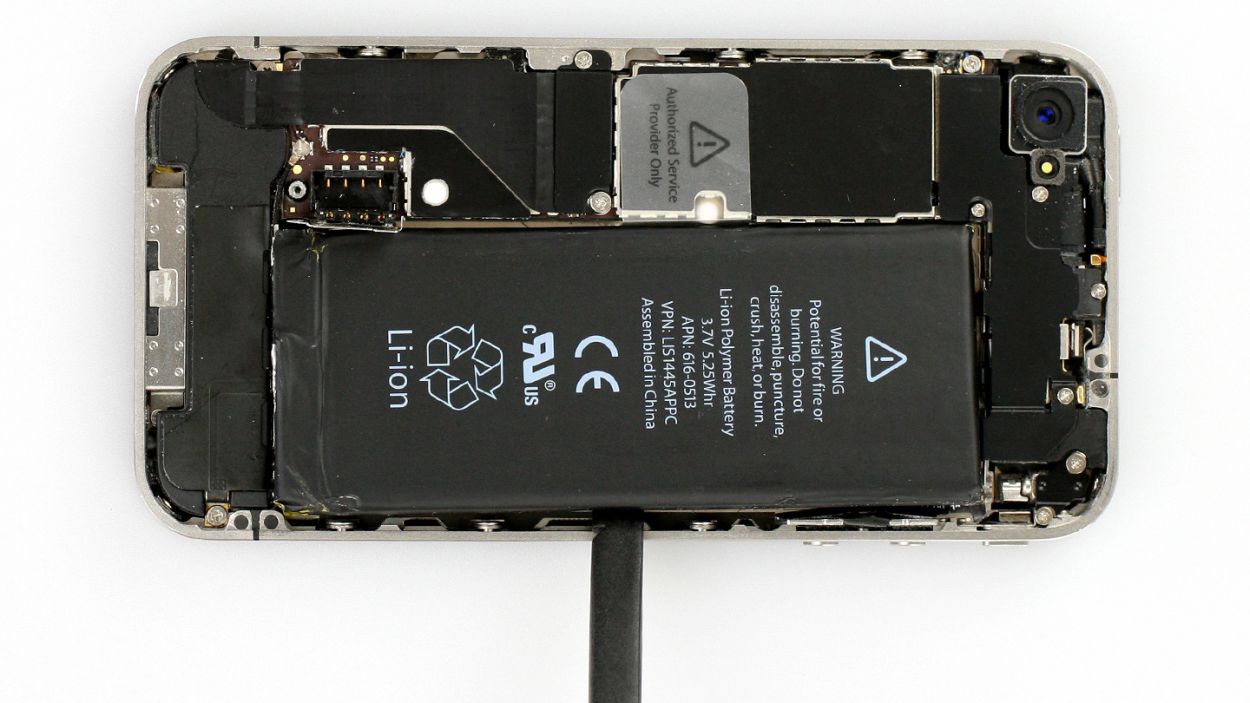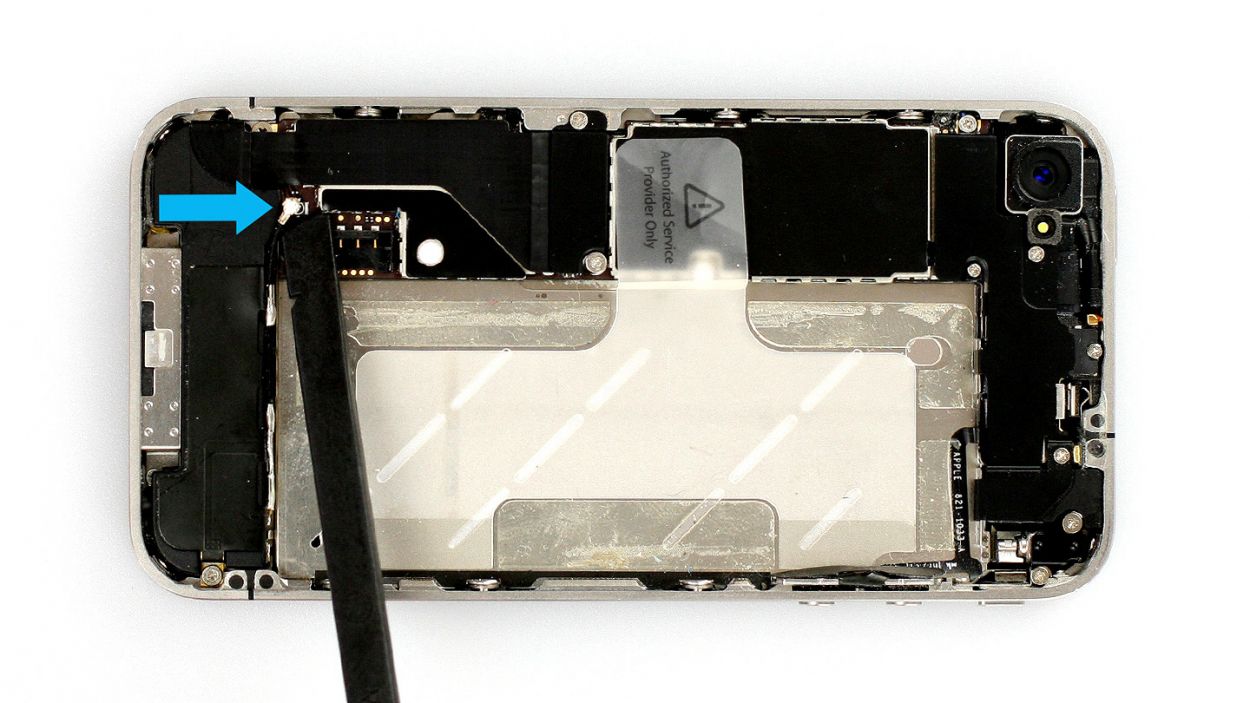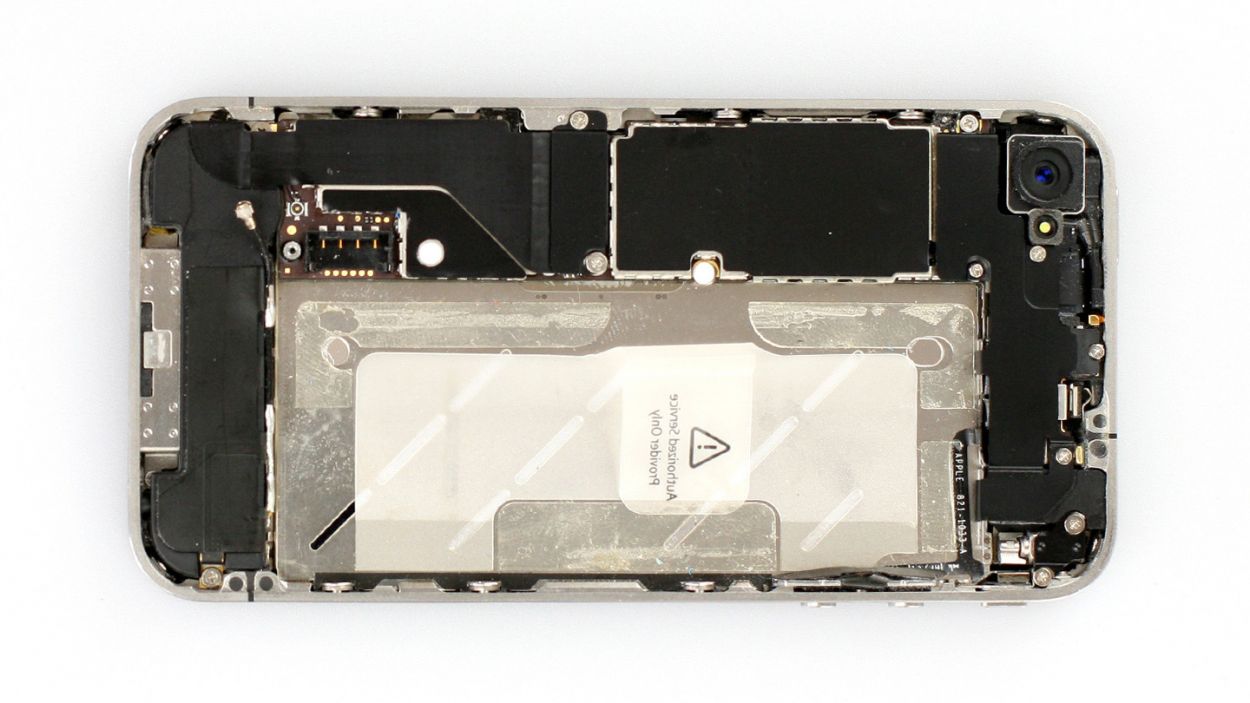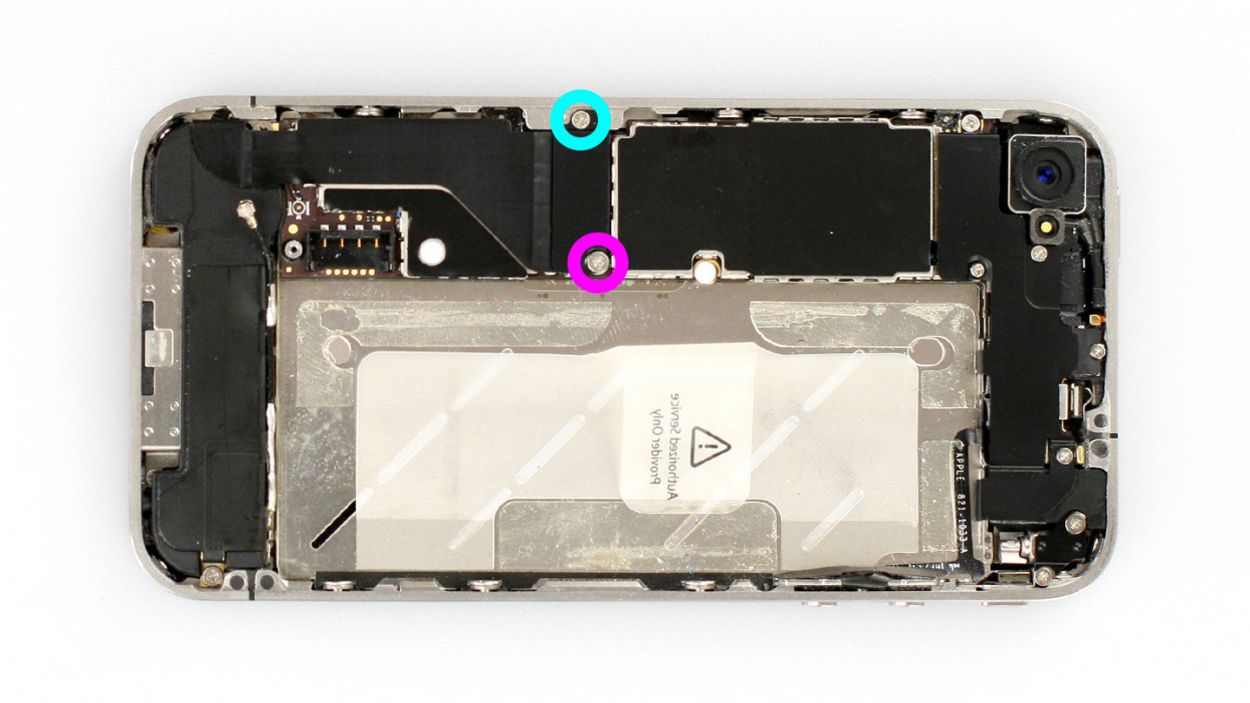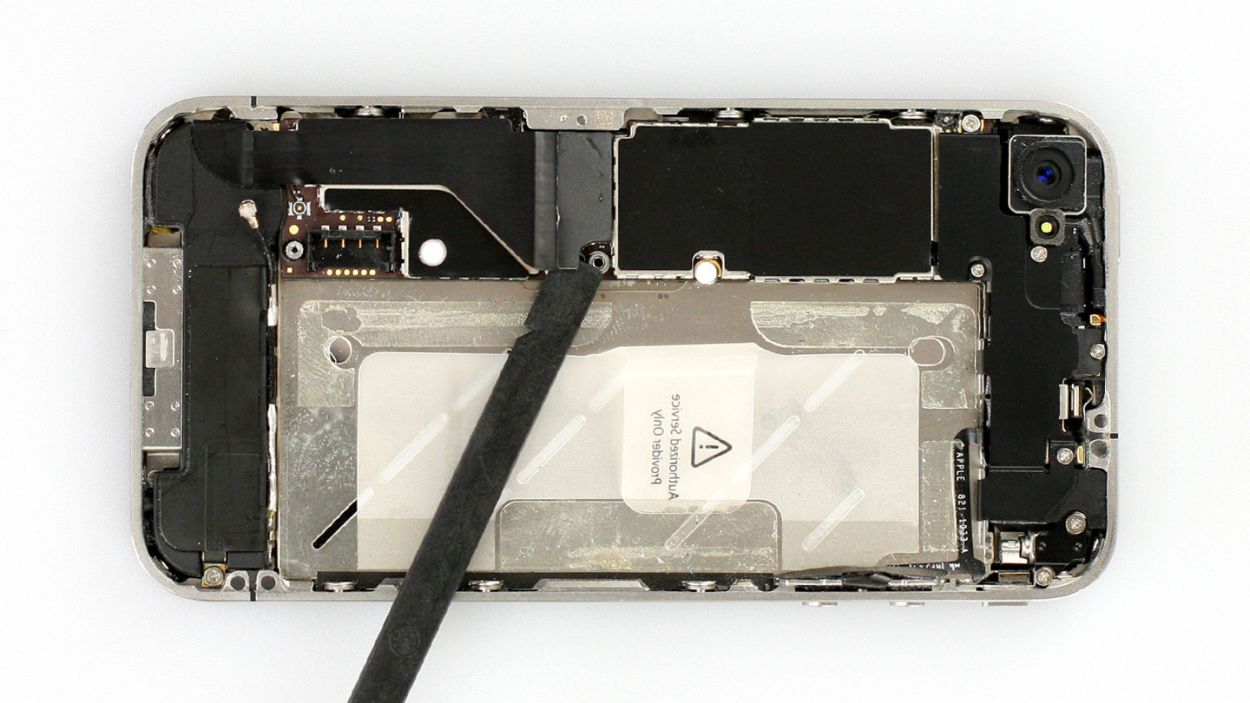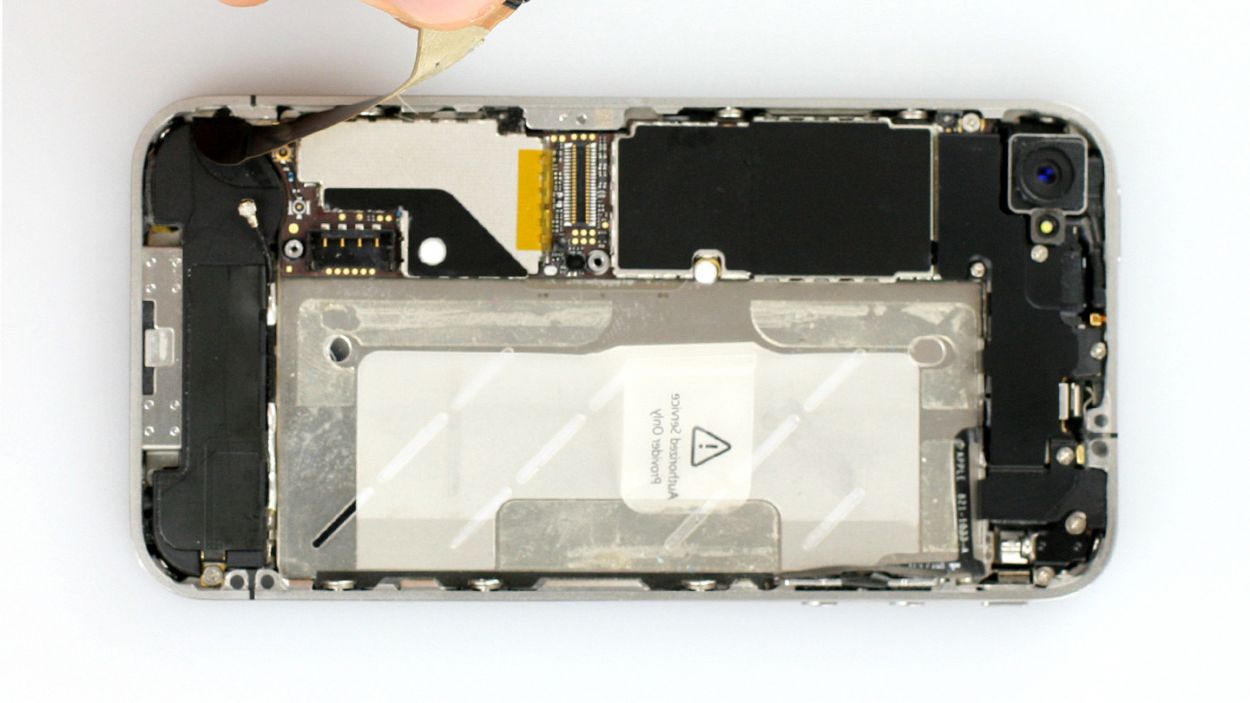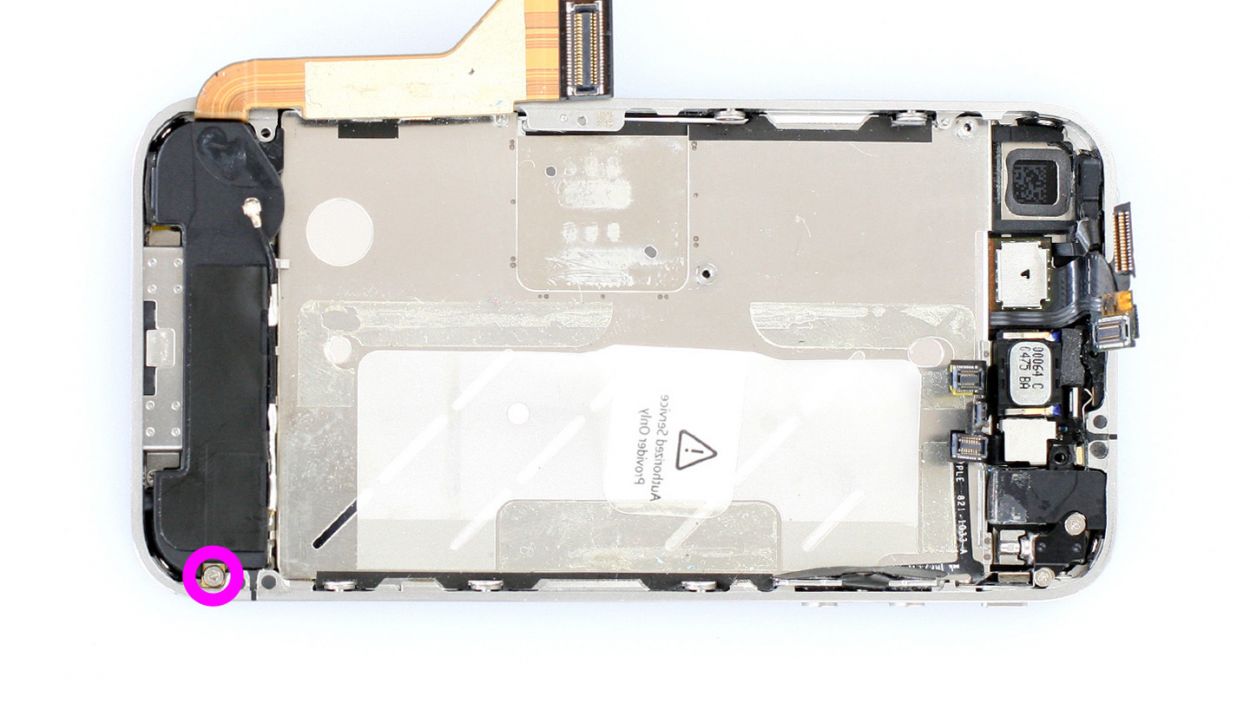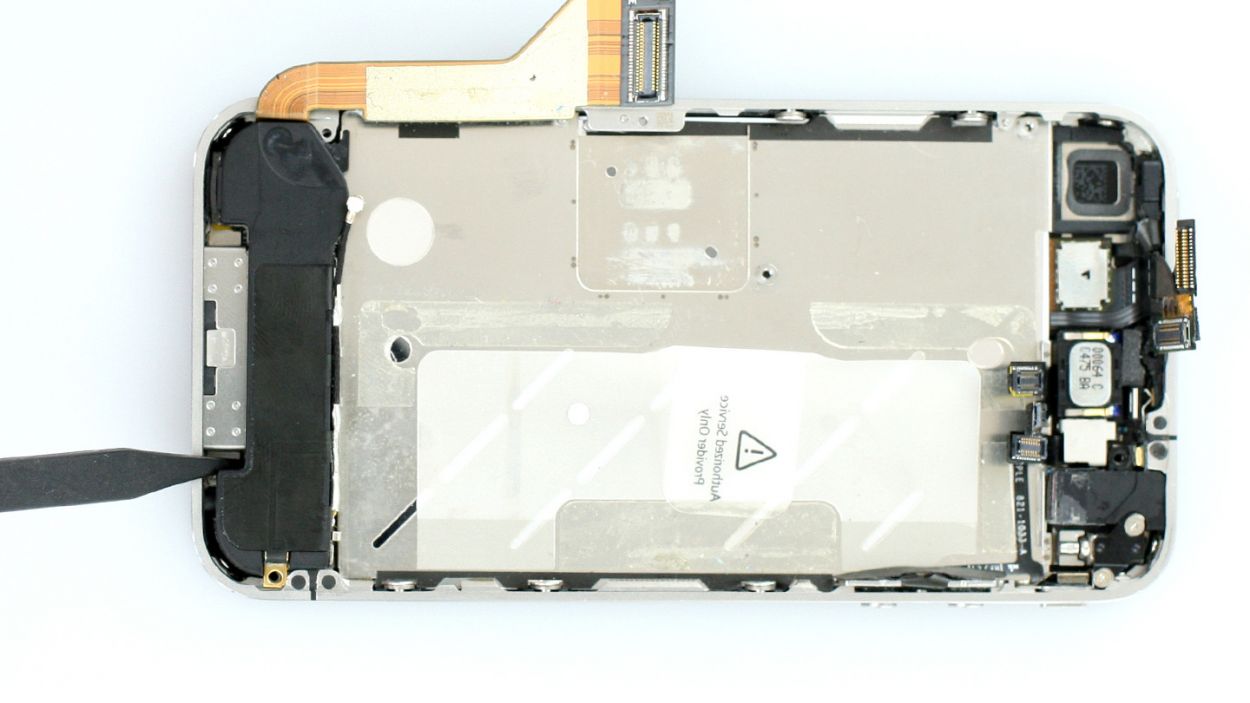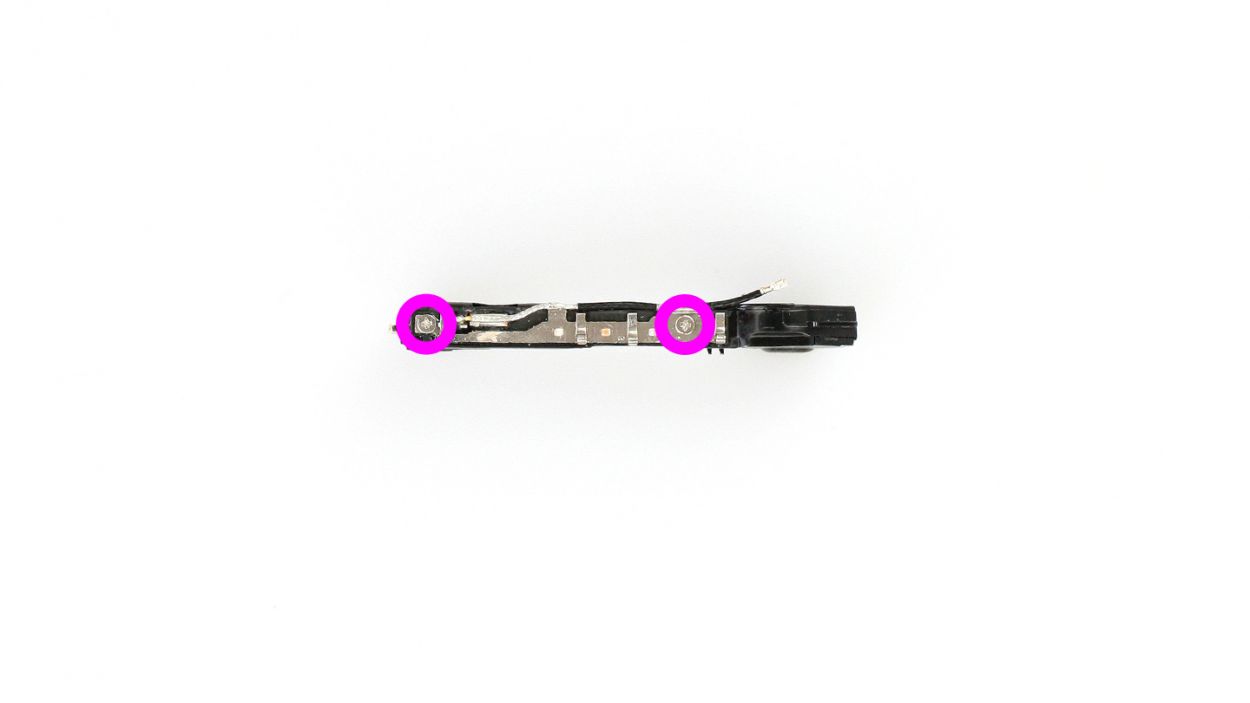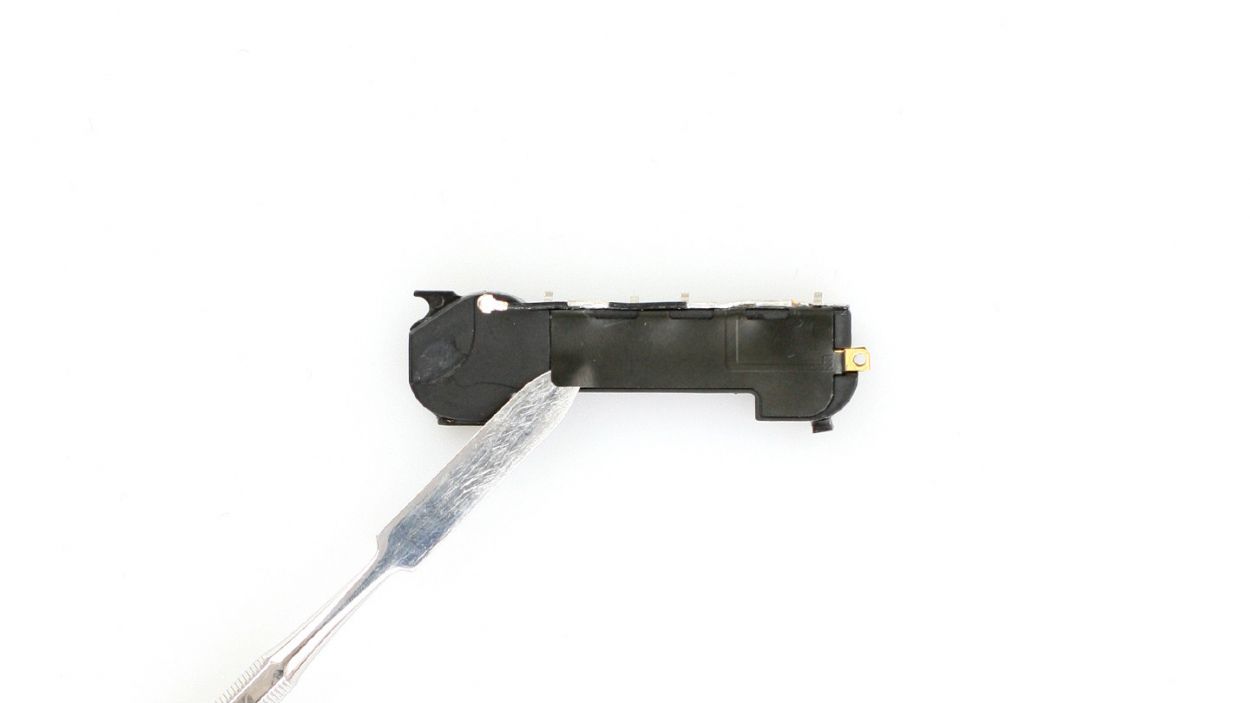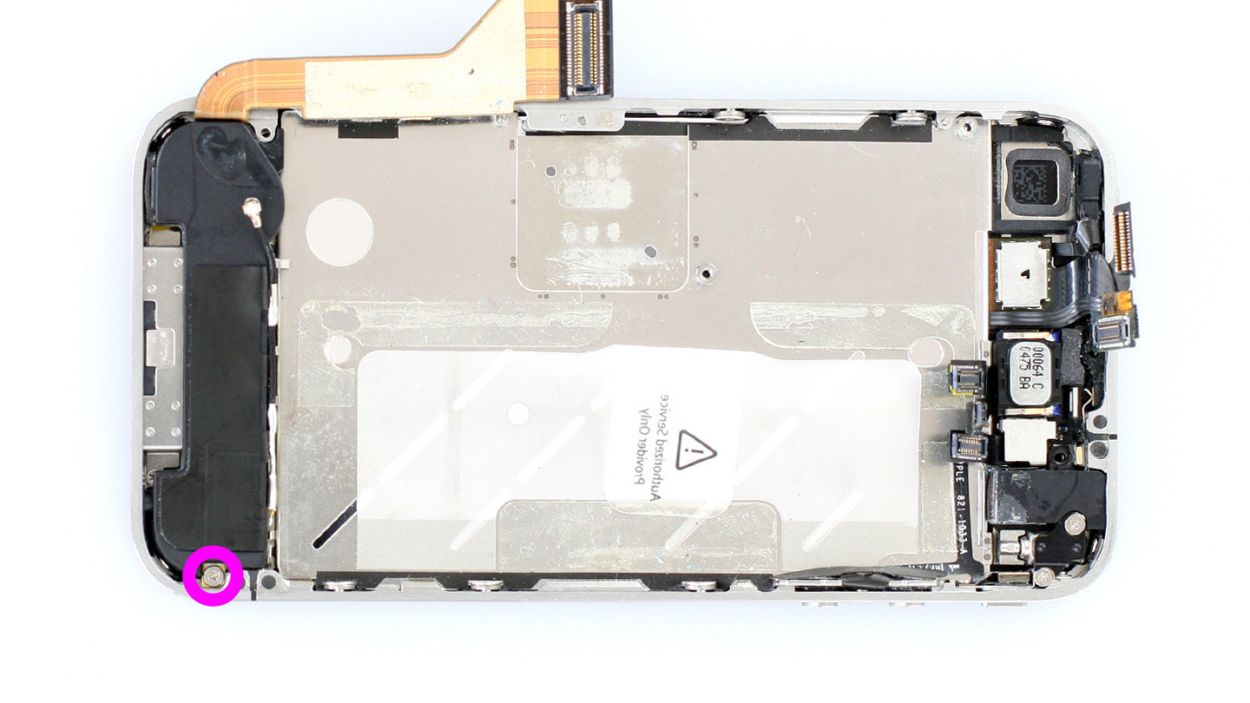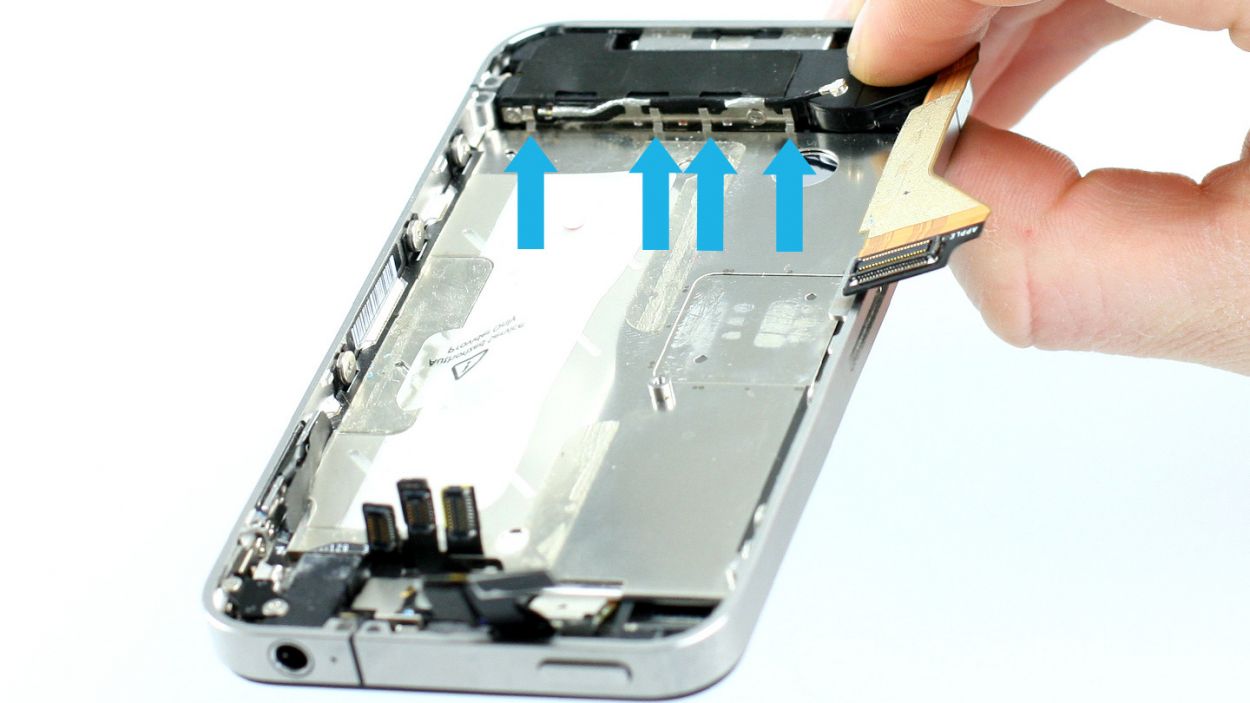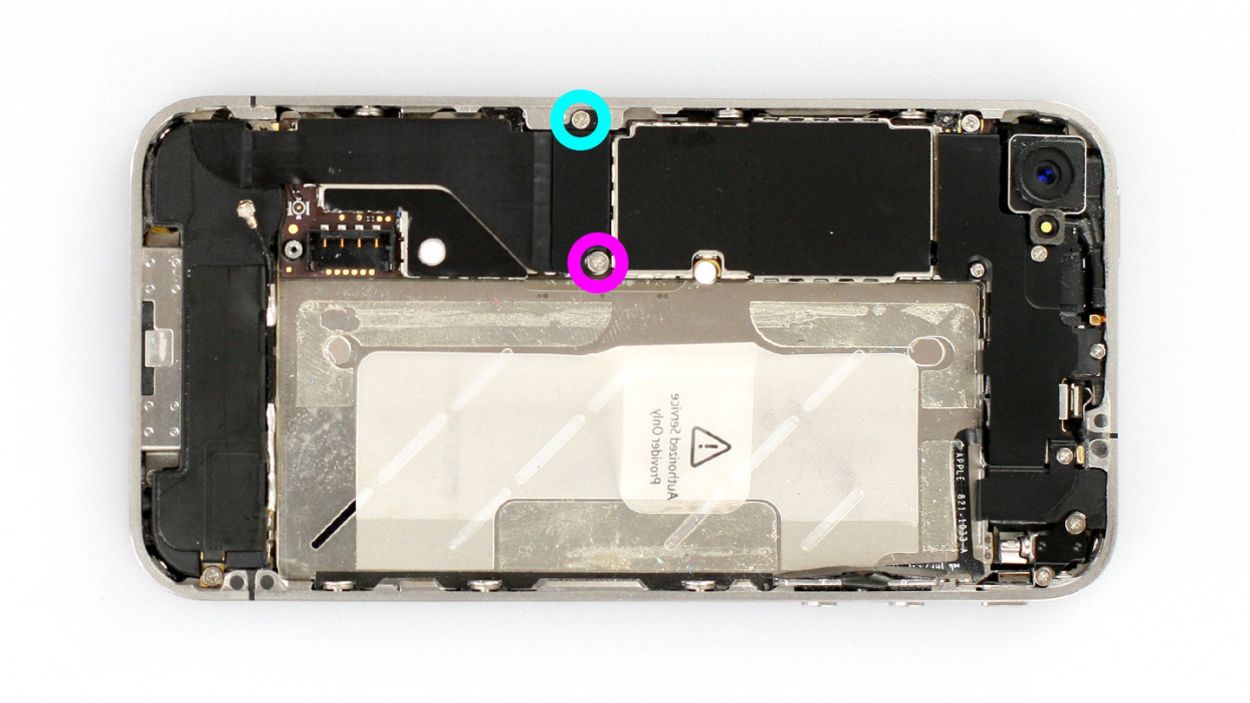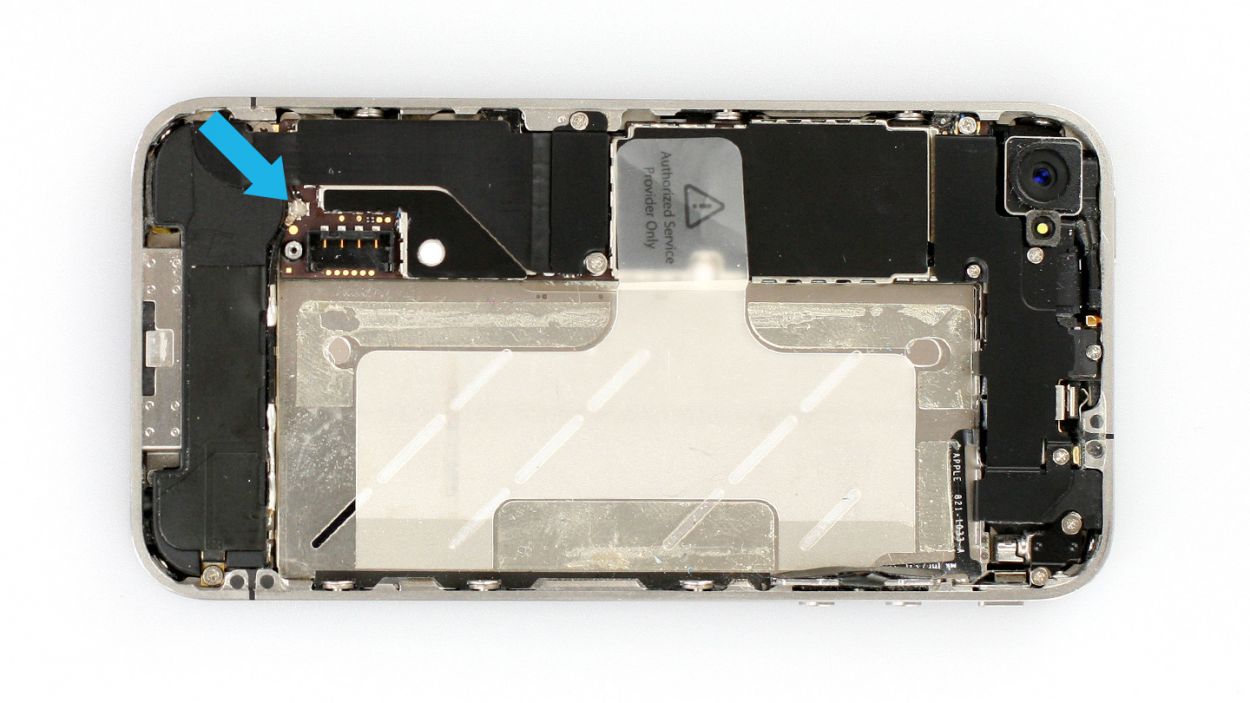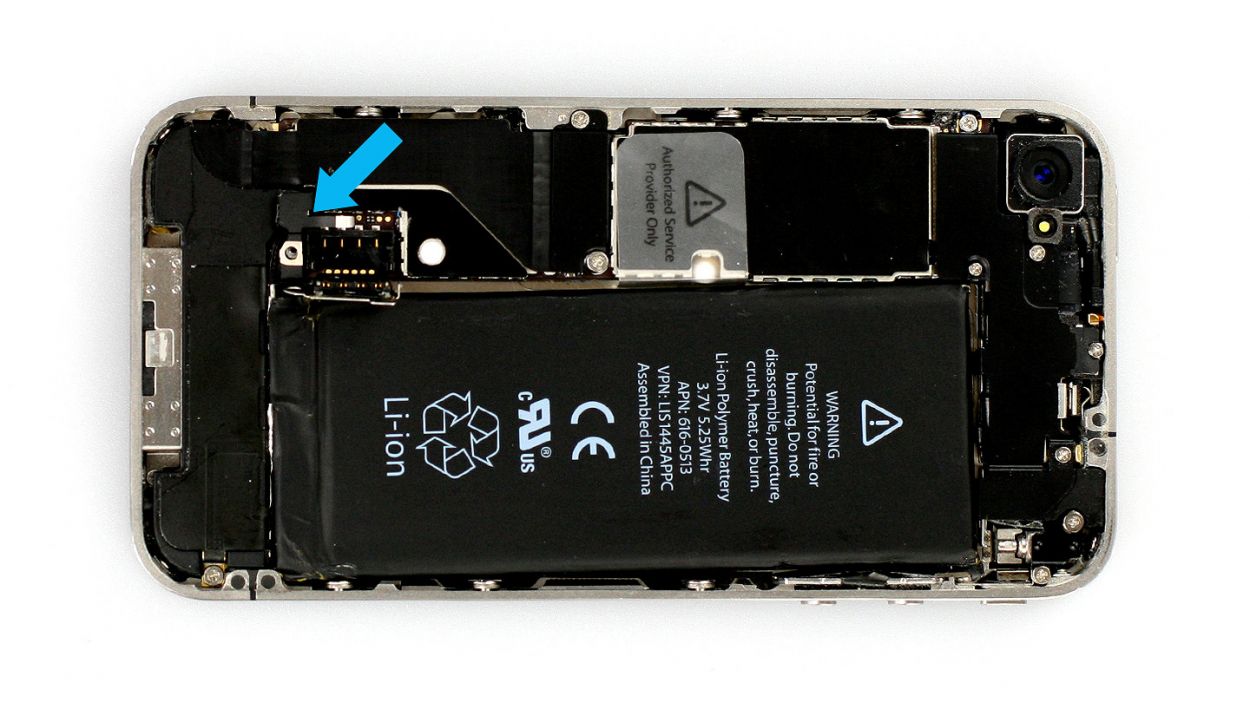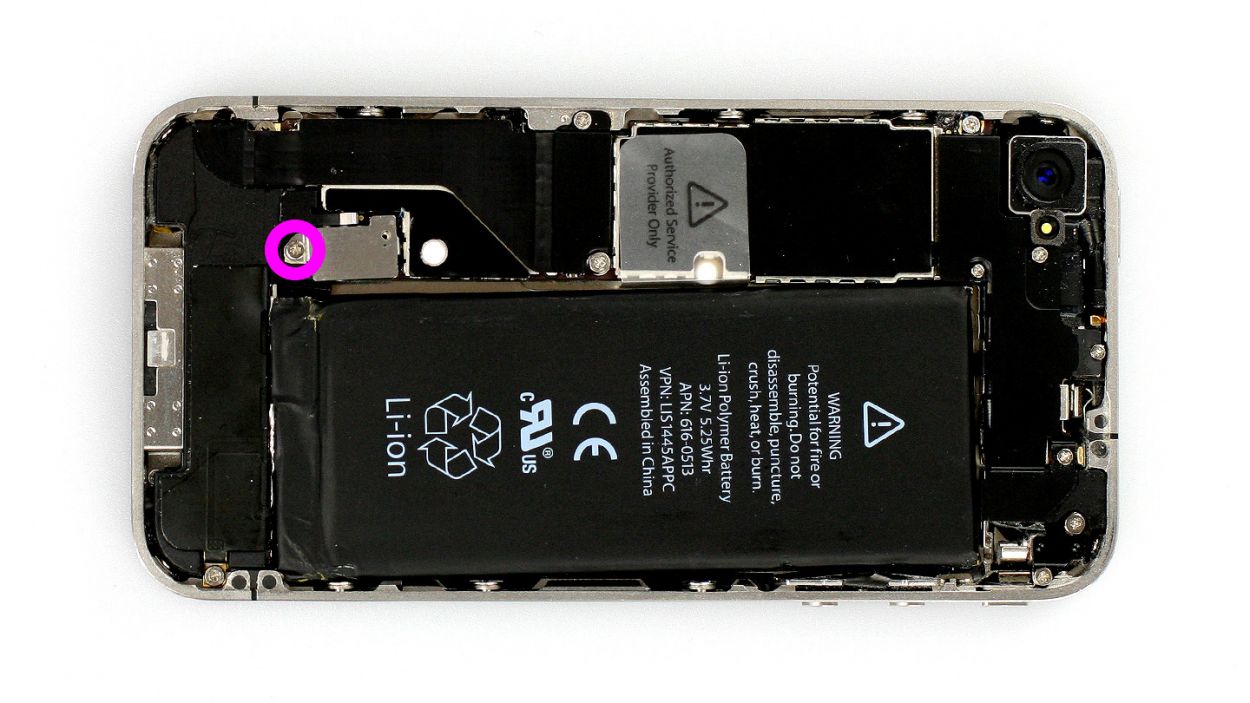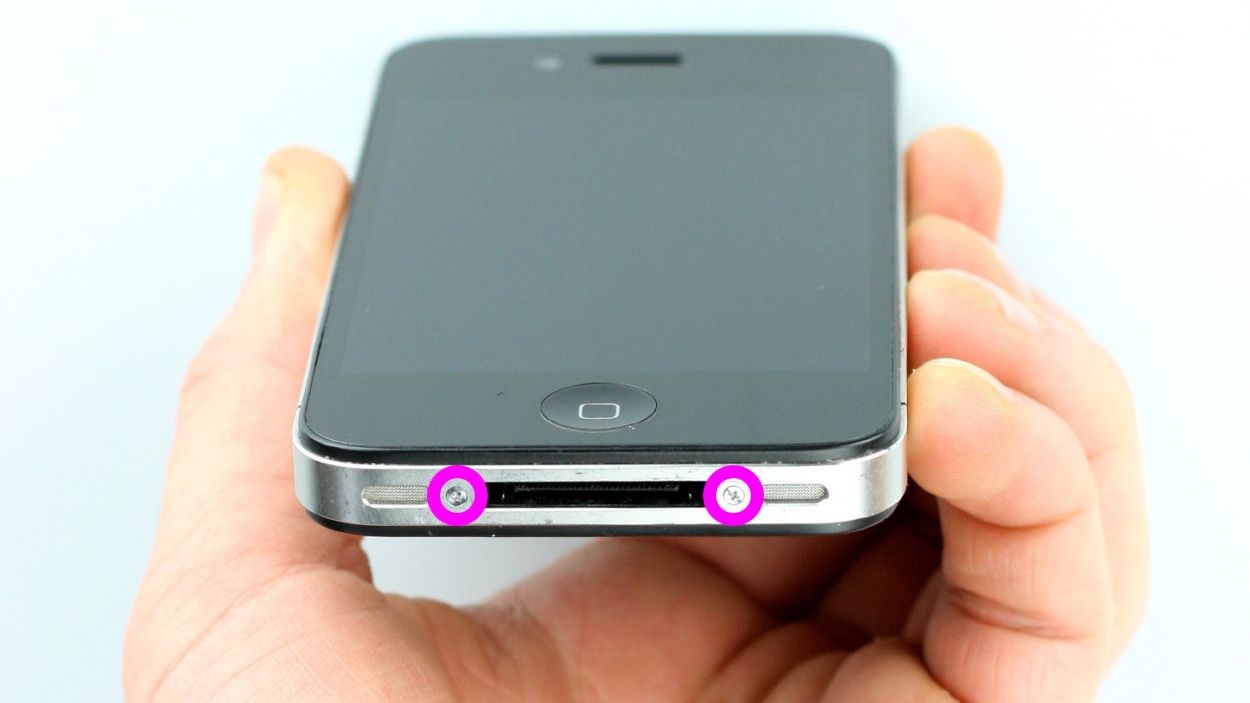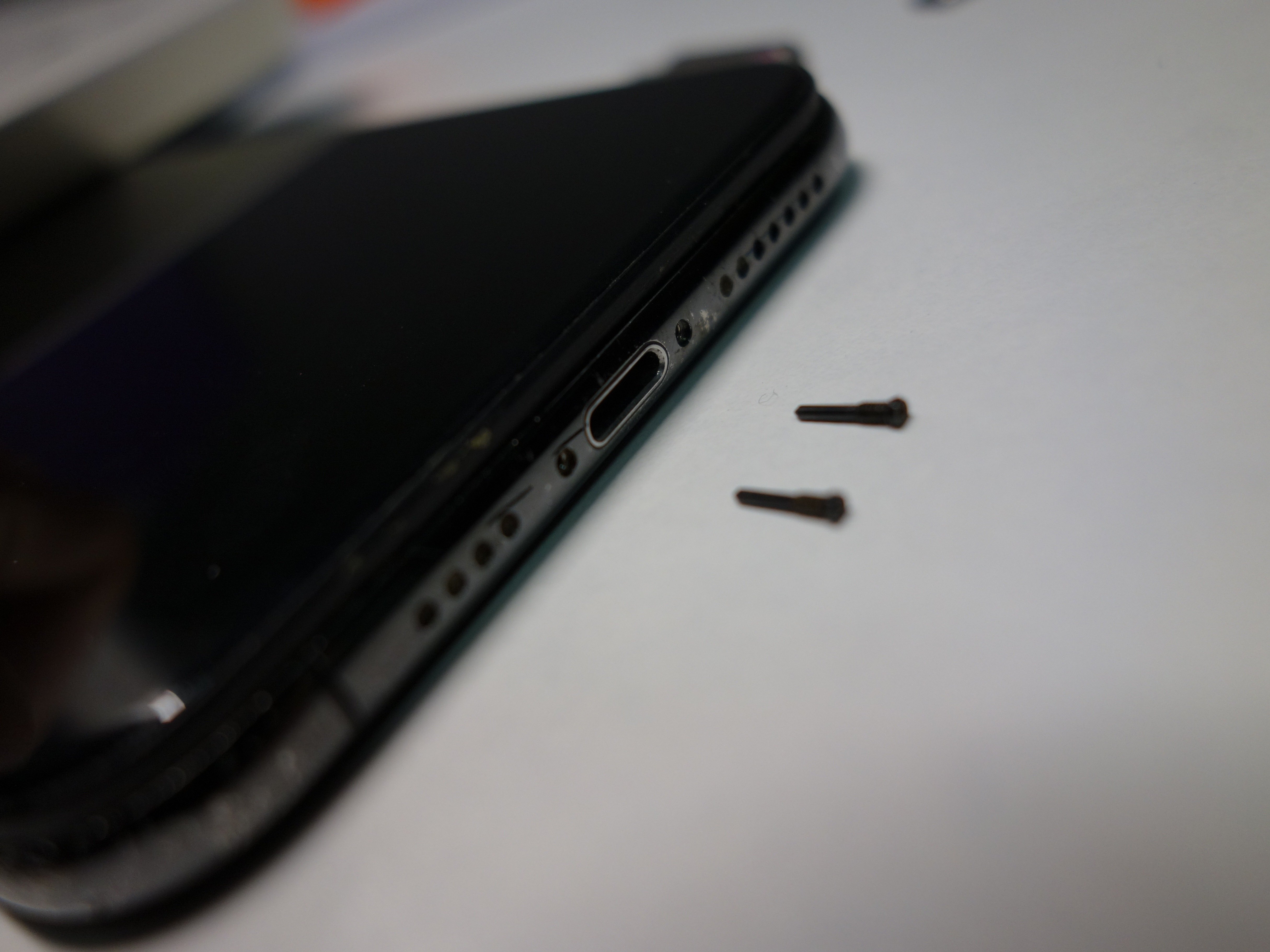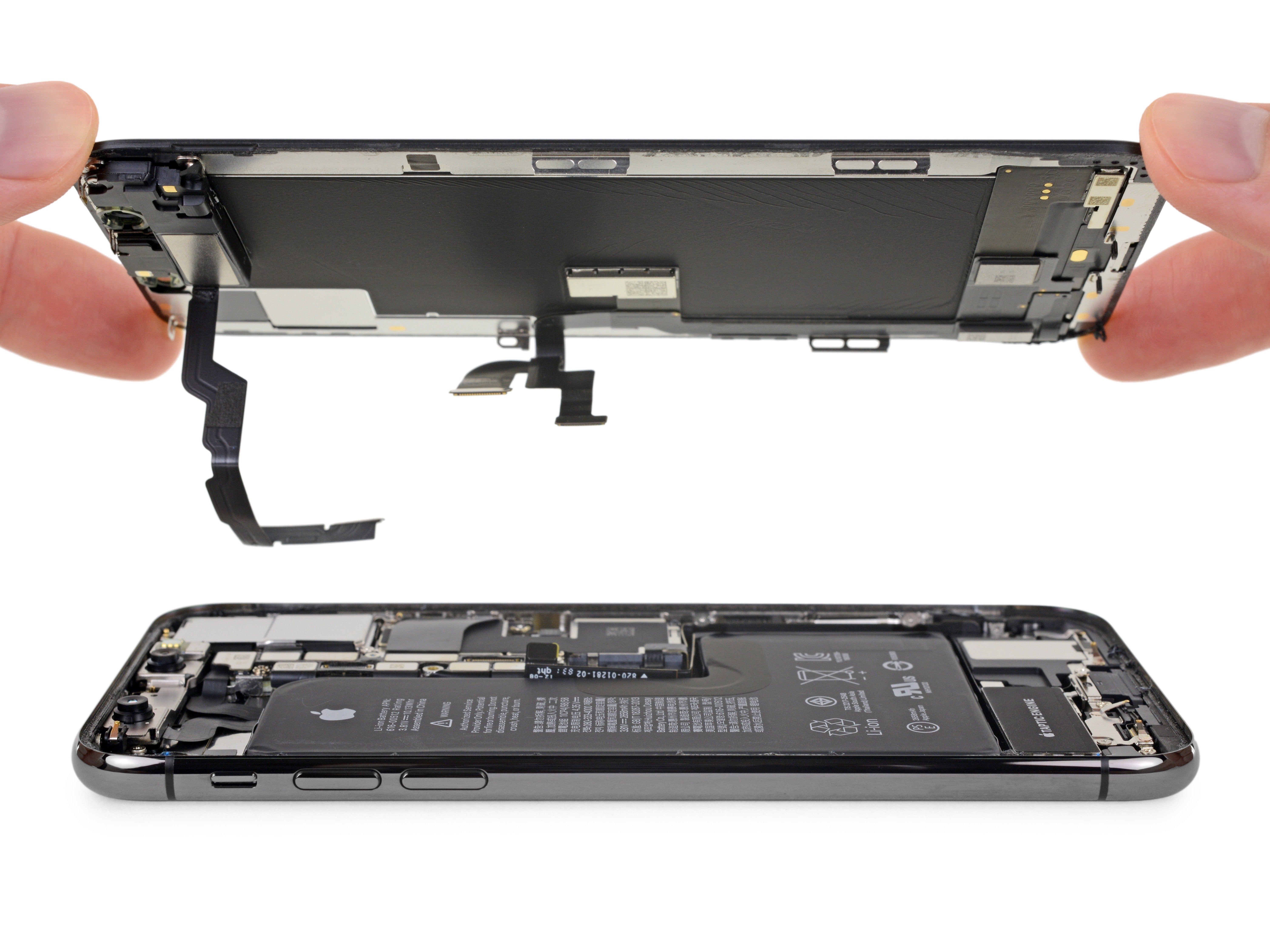iPhone How To Replace UMTS Antenna Guide – Step-by-Step
Duration: 45 min.
Steps: 15 Steps
In this guide, we’ll walk you through the process of swapping out your iPhone’s faulty UMTS antenna. If your iPhone is playing hard to get with the signal or only managing to catch a weak one, this repair is just what you need!
Step 1
– Depending on your iPhone’s birthdate, you’ll need either a Phillips screwdriver or a pentalobe screwdriver to get inside your phone.
– These little screws are hanging out to the right and left of the dock connector. Make sure to stash them in the same spot in your organizer tray. You’ll be dealing with 2 x 3.6 mm pentalobe/Phillips screws.
Step 2
– Give your iPhone’s back cover a gentle nudge with your thumbs or the palm of your hand, pushing it about 4 mm away from the bottom near the dock connector (check out figure 1 for guidance).
– Once you’ve coaxed it away, just lift the back cover from the end that’s peeking out past the phone (figure 2 will show you how it looks).
Step 3
The battery contact point on the logic board could come off. If the contact point breaks off but the soldering points are still intact, you can solder the contact point back on.
– If your iPhone’s still powered up, give it a little rest by holding the standby button for around five seconds until you see the prompt come to life on the screen.
– Time to tackle the battery connector! Grab your Phillips screwdriver and remove the screw (check out figure 1 for a visual). Be sure to stash that 1 x 2.6 mm Phillips screw in a dedicated spot in your organizer tray. In case the battery contact point gets too cozy with the logic board and decides to break off, don’t sweat it! If the soldering points remain intact, you can simply solder the contact point back on.
– With that cleared up, let’s gently lift off that pesky battery connector. Just slide your trusty ESD spudger right below the silver cover plate (figure 2 is your friend here). No spudger? No problem! Your fingernail can step up to the plate.
– As you continue your repair journey, feel free to swap in a metal laboratory spatula for the spudger if that feels more comfortable. Sure, it might make some steps a bit easier, but we always cheer for the precision of the ESD spudger that’s designed for electronics!
Step 4
– You’ve got some antenna cover magic happening under the battery connector! Lift that cover off and store it in your organizer tray with the Phillips screw you previously removed. (Check out figure 1 for the visuals!)
– Next up, it’s time to gently coax that battery out. Sometimes, it can be a bit clingy! Slide the flat end of your spudger into the tiny gap (around 1 cm to the left of the volume down button) between the battery and the outer frame, and carefully lift it up (see figure 2 for assistance). If it’s playing hard to get, try using leverage points on either side to pry it free. Still no luck? A little warmth from a heat gun might just do the trick to loosen the glue from the outside!
– And don’t forget, you can also disconnect the antenna connector! Just use your spudger to carefully pull it off the plug head (see figure 3 for help).
Step 5
– Give that plastic tab a little fold and press it down snugly onto the lower adhesive strip. This way, it won’t be a pesky distraction while you’re working your magic on the repair.
– And hey, if you’re feeling adventurous, you can totally just remove the plastic tab instead!
Step 6
– First off, say goodbye to the two Phillips screws holding your dock connection cable in place—just loosen them up and then gently remove the black (or silver for the hipper models) cover (check out figure 1 for a visual!). You’re dealing with a 1 x 1.6 mm Phillips screw and a 1 x 1.2 mm Phillips screw here.
– Be a star and keep those screws and the cover in the same spot in your organizer tray; it’ll make your life so much easier trying to tell them apart later!
– Now it’s time to carefully release the connector! Grab your trusty spudger and gently lift it up again. No spudger? No worries—your fingernail is ready to save the day (see figure 2 for how-to).
– Go ahead and peel off that flat cable that’s just a little too attached to the logic board. Bend it gently over the frame like a pro (see figure 3)!
Step 7
– Unscrew that last Phillips screw holding the speaker in place (check out figure 1 for a visual guide), and then gently pry it loose with your spudger (see figure 2 for assistance). Make sure to stash that little screw in a separate section of your organizer tray so it doesn’t go on its own adventure.
Step 8
– You have to remove the old antenna that’s attached to the speaker. Unscrew the two equally sized Phillips screws (see figure 1).2 x 1.6 mm Phillips screws
– Now remove the antenna, which is glued on, using the laboratory spatula and then stick a new antenna on (see figure 2).
– Then you have to fasten the two Phillips screws again.
Step 9
– To kick things off, give that Phillips screw on the speaker just a gentle snug (check out figure 1 for direction). You’ve got a 1 x 2.4 mm Phillips screw here!
– Now, let’s make sure the speaker’s clips are snugly fitted against the back side of the higher part of the middle cover (figure 2 will show you the way). It’s super easy if you only tighten the screw just a tad at first, allowing the speaker to wiggle around a bit.
– Once everything is lined up and those clips are in place, go ahead and tighten that screw all the way!
Step 10
– Reconnect that dock connection cable and pop the black or silver cover back on like a pro!
– Now, grab those two Phillips screws and fasten them snugly again—you’re using a 1 x 1.2 mm Phillips screw and a 1 x 1.6 mm Phillips screw here.
Step 11
– Give that plastic tab a little tug and either detach it or pop it back in if you’ve taken it out. We want to keep things tidy while you work your magic!
Step 12
– First up, let’s reconnect that antenna connector—just like in figure 1!
– Next, slide the battery back into its cozy spot in your iPhone.
– Now, it’s time to secure that antenna cover—check out figure 2 for a little help.
– Finally, click the battery connector back into place and give it a good screw in (see figure 3 for guidance). You’re using one 1 x 2.6 mm Phillips screw here!
Step 13
– Place the back cover back on and give it a gentle nudge to slide it the last few millimeters toward the dock connector.
Step 14
– Time to get those screws in! Grab your trusty screwdriver and secure the two screws at the bottom of the enclosure—you’re working with 2 x 3.6 mm pentalobe/Phillips screws here.
– Once that’s done, just slide in the SIM card tray like a pro!
Step 15
When you pop the battery out of your iPhone, it might just forget the time and reset to 1:00 a.m. on 1/1/1970. If that happens, you might find it a bit tricky to connect to the cellular network until you set the time right again!
– Get your iPhone in sync with iTunes or hop onto a WLAN network and hang tight until the time is all set up.
– Pop out the SIM tray with the SIM card and then slide it back in.
– Turn on airplane mode for a moment, then switch it off again to refresh things.
